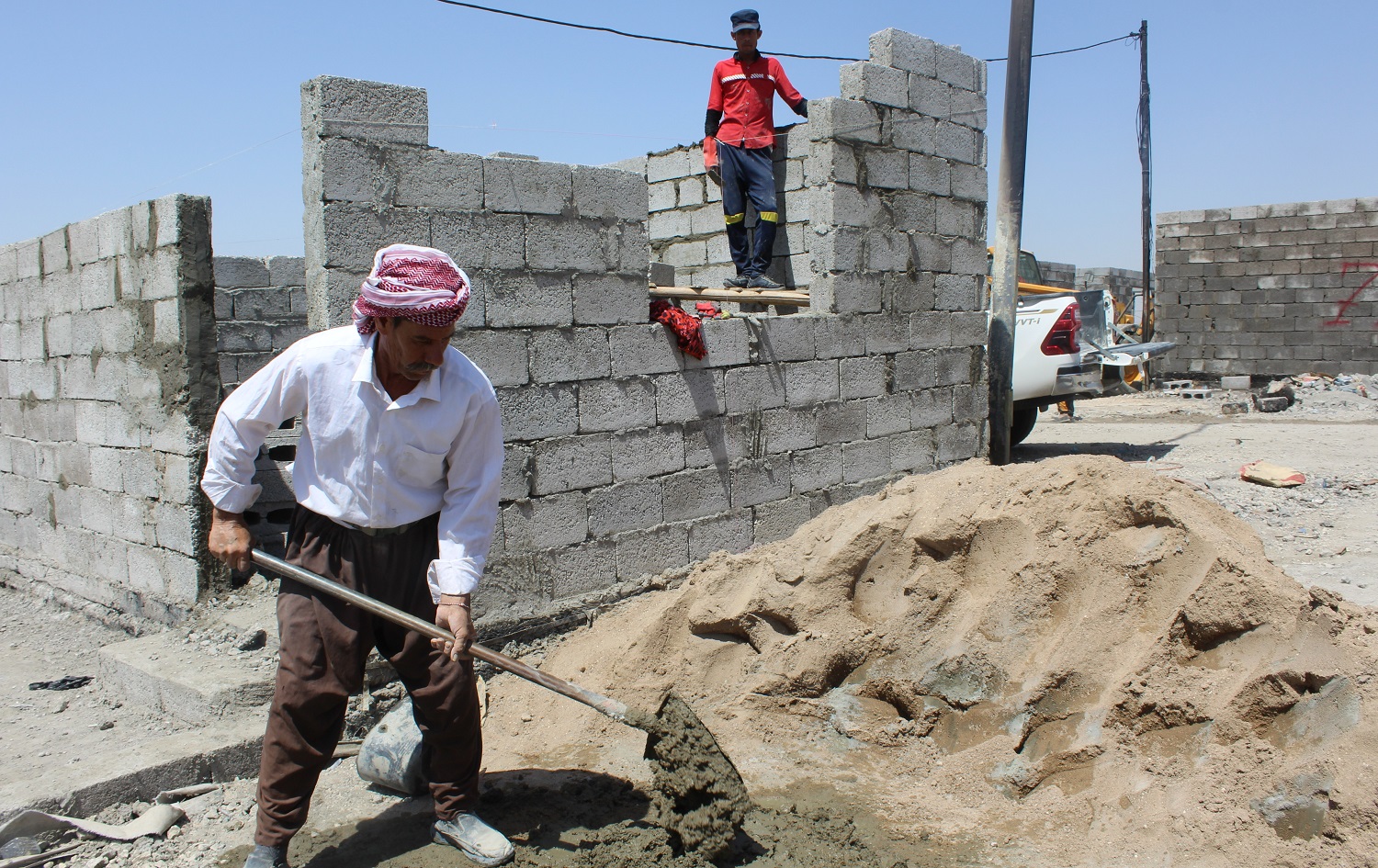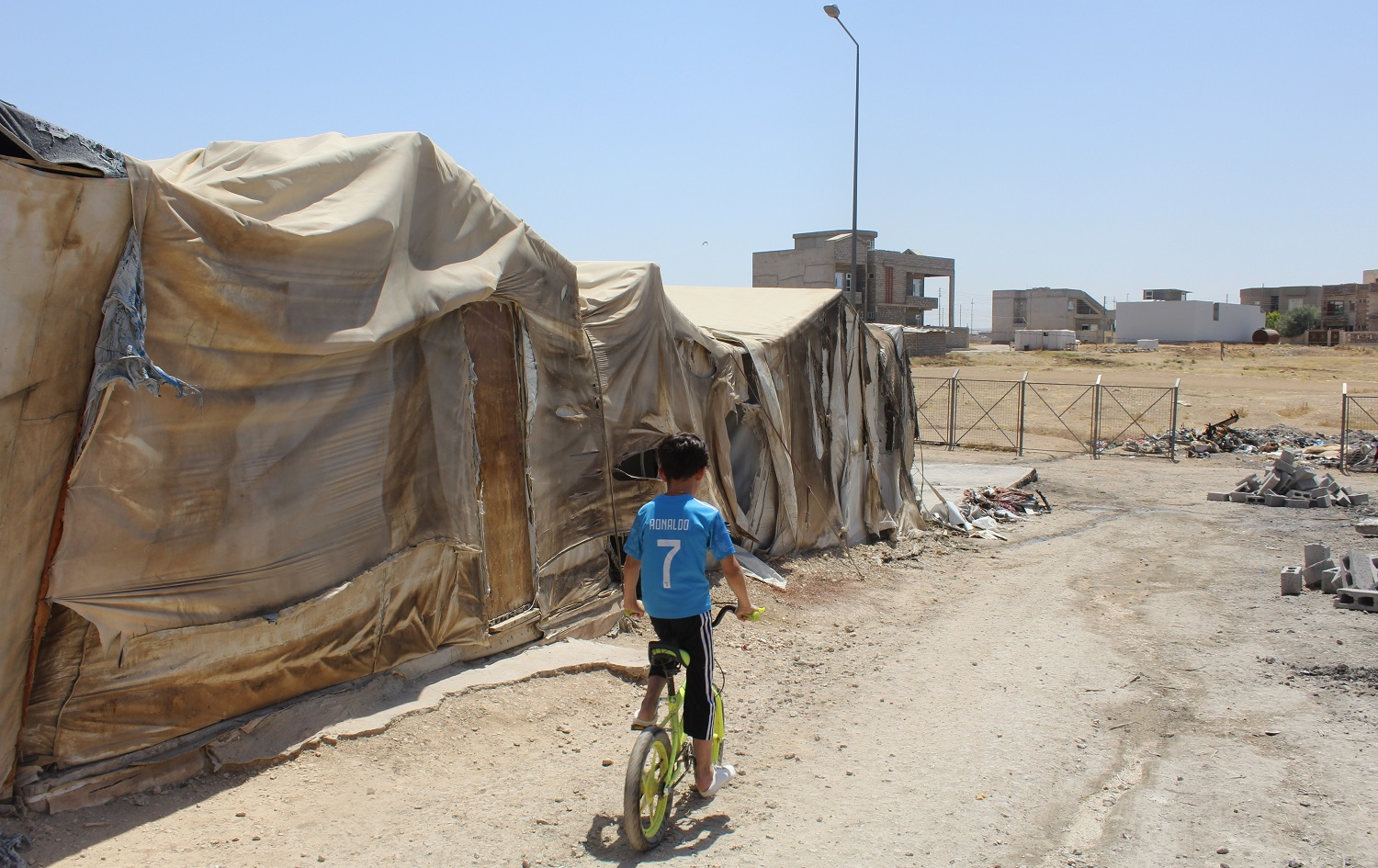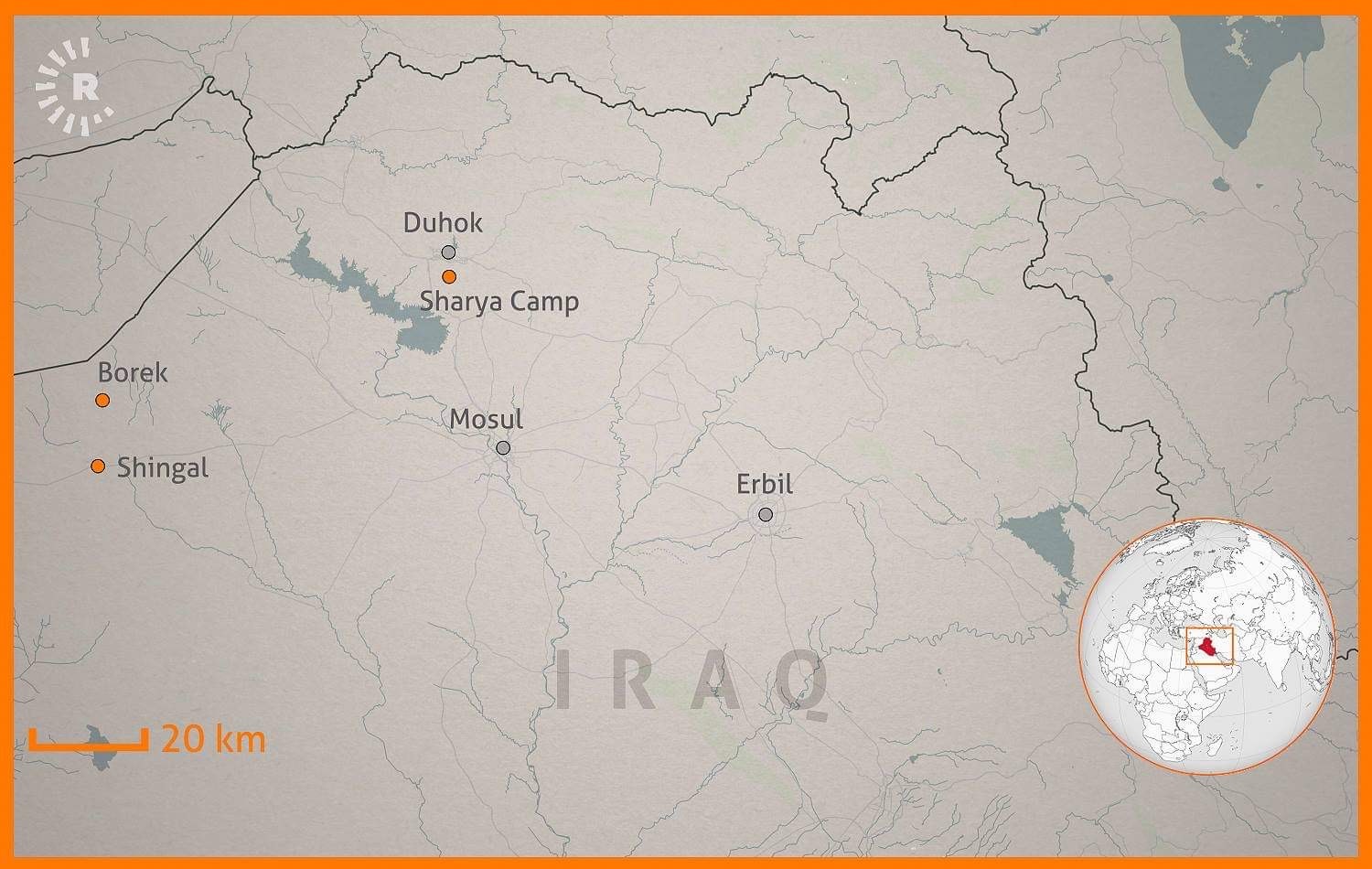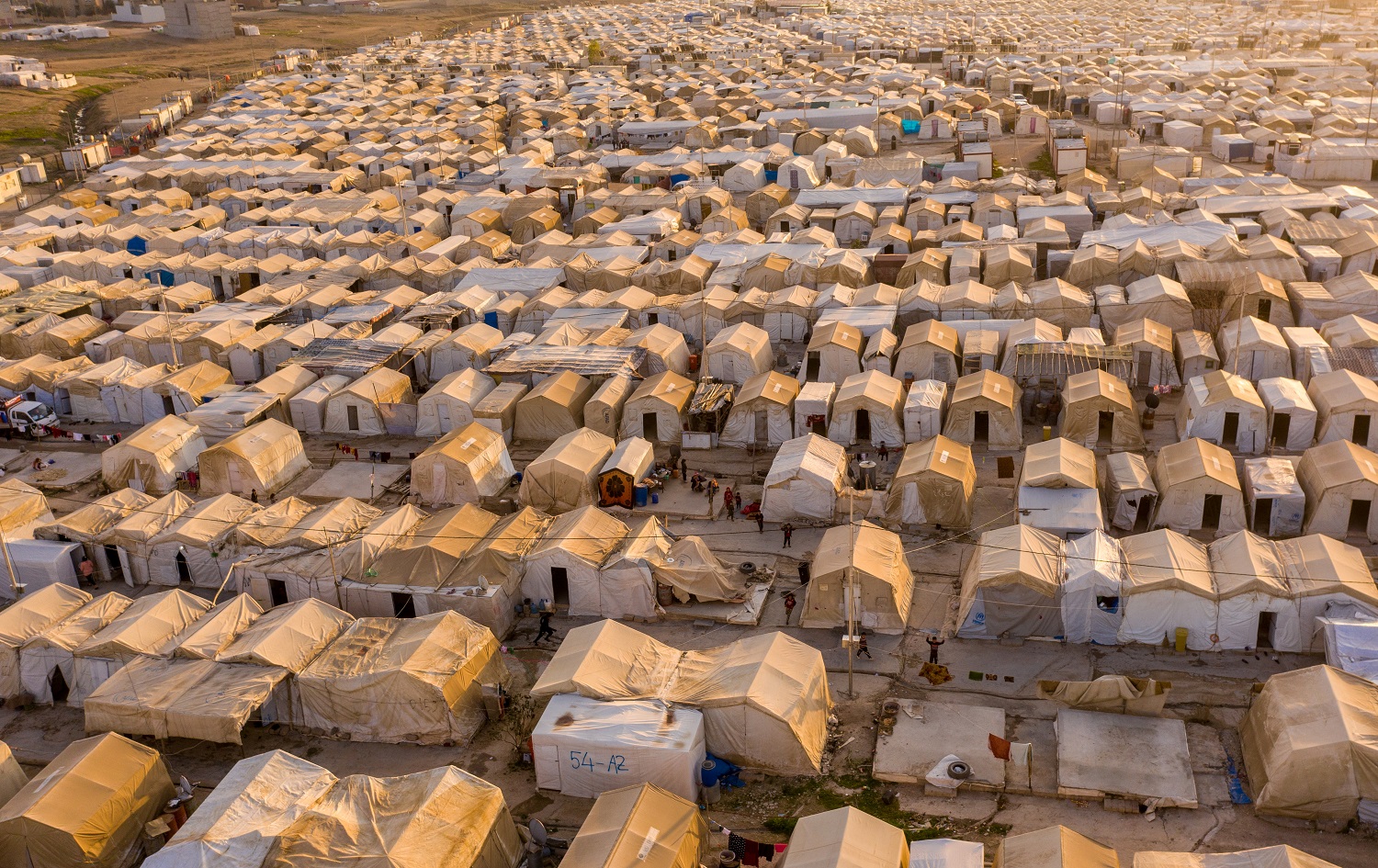SHARYA CAMP, Kurdistan Region — On June 4, Salah Jerdo was resting from the midday heat when he heard neighbours yelling from outside his brother’s tent, one of 4,000 in Sharya camp. Across the room, his six-month-old daughter slept peacefully, oblivious to an inferno outside that would engulf their tent in a matter of minutes.
Just a stone’s throw away, an electrical fault had sparked a fire that blazed through flimsy tent walls, swallowing them up with frightening speed. Salah reached for his daughter, pulling her out of the tent while he took his phone out and began broadcasting to the outside world the scene unfolding in front of him. His home for the past seven years was burning to the ground.
For years, fires have plagued the refugee and internally displaced persons (IDP) camps dotted across the Kurdistan Region, but little action has been taken to safeguard the 36 sites housing more than 270,000 refugees and IDPs. Sharya camp is home to Yazidis who fled genocide at the hands of the Islamic State group (ISIS). While lip service has been paid to securing their return home, paltry efforts have been done to improve camp conditions. Almost entire families have fallen victim to the flames, leaving camp residents, already paralysed by the conflict and genocide that forced them to flee their homes, living in constant fear of fire.
RELATED: Duhok IDP camps are at fire’s mercy
As the flames spread through Sharya, Salah and several other men ran from tent to tent, pulling children out and shouting at families to get to safety. They raced across the camp, a sprawl of tents so close it is hard to distinguish where one begins and the other ends, trying to keep ahead of the fire that was fuelled by kerosene heaters and a strong wind that would only subside when the blaze was extinguished more than 40 minutes later. The camp fire truck was nowhere to be seen.
A little after 1pm, almost 400 tents had turned to ash when the blaze was finally extinguished after brigades arrived from Duhok and Semele, a 20 minute drive away. In a stroke of incredible luck, and because of the efforts of Salah and other residents, no one died.
Salah, a Peshmerga, has a Facebook page followed by more than 16,000 people where he appeals for aid for widows, orphans and others in need. “I can live in the trees, I can live anywhere… I just want to see people happy and living in dignity,” the 30-year-old said over the phone on the night of the blaze.
Dr Hussein Rasho, a physician, has worked with hundreds of survivors of ISIS captivity and others traumatised by the genocide. A Yazidi himself, he knows the deep wounds his people carry - and the fear that grips the camps.
When news broke about the fire, he took to the road, driving from Shingal to Sharya, where he said the inferno took him back to dark days of August 2014, when ISIS launched a genocide against the long-persecuted Yazidi community. “It’s like August 3,” he said via WhatsApp, sharing photos of scorched earth and belongings abandoned in the hurry to flee.
Driving down the bumpy, unpaved road that winds through the southern edge of the camp two weeks after the fire, the sea of tents gives way to scorched, flattened ground where concrete shelters are being built, approved by the Kurdistan Regional Government (KRG), to house the 240 families who were made homeless by the blaze. The KRG provided labourers, but most of the work is being done by camp residents - men and women alike - building their own places.

“This is not where we belong,” Hamid Hamad, 57, says as he prepares cement. A checkered turban worn by many Yazidi men protects him from the hot midday sun. In the distance, middle-aged women in lilac veils lift their skirts as they weave through the mud and begin to stack bricks.
“I have lost everything. Isn’t it a crime that a man of my age should be doing this work?” Hamid asks.
The shelters, measuring 4x4 metres, are claustrophobic. Salah’s brother, also a Peshmerga, has bricks to build two shelters for his family of eight, but says he has only been given permission to build one to house them all.
“This has to be used as a kitchen, a living room and a bedroom. Everyone has to sleep side-by-side,” says Salah. “We cannot live like this, eight family members in one room. We’re all adults.”
He beckons us to a clearing, motioning to tents blackened by smoke. Signs of life beckon through gaping holes ripped open by flames, cooking utensils and toys just spared by the blaze. This is where they extinguished the fire, he says. “As long as the children are safe, the rest is not important.”
Others standing around mutter quiet praises to God that they escaped with their lives. “What Salah did for us, no one else did,” one says.
Initial relief that they survived is being taken over by anger at the official response and the misery of life in the camp.
In the growing rows of concrete blocks, a kindergarten houses families left homeless by the blaze. Others, including Salah, are sheltering with families who didn't lose their tents, making small living spaces even more cramped.
Speaking to Rudaw, camp officials denied claims that the camp’s fire truck was out of service, saying it was unable to enter the camp due to crowds that had gathered.
Construction of shelters to replace the burned tents is now finished and camp authorities plan for other residents to do the same.
“Every family from the camp can build shelters, but now, all our focus is on the families impacted by the fire,” said Dilawer Behlawi of the Barzani Charity Foundation (BCF), which administers camps in the area. “We have prepared all the furniture needed for them… everything is ready now.”
Iraq’s Minister of Migration and Displacement Evan Faeq Jabro visited the camp on the day of the fire and was met by a furious crowd. Anger over the new devastation was coupled with resentment and distrust towards the ministry and the government as a whole, heightened by the return of ISIS-linked Iraqi families from the Syrian camp of al-Hol just a week earlier.
“Go back, go back,” they shouted.

The ministry said in the days after the disaster that families affected would receive financial compensation, which Behlawi says they have received. But the people say they have seen none of it. On the day we visited, a throng of women were huddled at the entrance to the camp, waiting for news of the promised assistance from Baghdad. They were eventually dispersed by camp officials.
“The central government hasn’t even given us a bottle of water,” Salah says as a young boy passed around water to the crowd of workers.
Next to Salah stands Hasan Bashar, his black and yellow shirt dusty from bricklaying. The blaze consumed all of his savings from his job as a cleaner in the camp that pays him 300,000 Iraqi dinars a month. “I’ve been saving for liver surgery,” he says, pointing to his abdomen.
Now, he has lost it all, as well as several days of work. “I asked for four days off work to build my shelter, and they said no. One of my children has nightmares. He wakes up in his sleep, screaming ‘fire, fire’."
Salah hails from the village of Borek, flanking the north side of the mountain range that watches over Shingal on Iraq’s northern border with Syria. After their father passed away, he and his brother shouldered the responsibility of providing for the family, working as daily labourers on construction sites.

“My life in Shingal was all work. We were working to support our family… It was very difficult, to be honest,” he says.
When ISIS attacked in August 2014, his family fled to the Kurdistan Region after a gruelling week on the mountain, but Salah didn’t join them, instead joining the fight against the jihadists at Sherfedin, one of the oldest and most important shrines for Yazidis. Two of his uncles were taken by the terror group and remain missing.
“With my own eyes, I saw women throwing away their children so they would not be taken by ISIS. With my own eyes. Some had two children. They would leave one and take another with them,” he says.
Salah survives on his Peshmerga salary of $400 a month. After joining his family in Sharya, he has been documenting life for his community on his mobile phone.
“In 2017, I looked at our people’s situation… Some didn’t even have tea to drink, or food to eat, so I started making videos of their situation for people who wanted to help.”
He now meets with the needy, the sick and orphaned, documenting their hardships on social media and directing aid to their families, mostly from the diaspora in Europe.

The fire has reminded people of the danger of camp life, but returning home, they say, is out of the question right now because of lack of reconstruction, services, and security in Shingal.
“If you come with us, we’ll show you the bones of our children still lying in the streets. They are still there. No one cares about us,” says Salah. His neighbours nod in agreement, listing their family members still in the hands of ISIS: “my brother, his wife, their children.”
Mayan Hussein, a psychotherapist with the Free Yezidi Foundation, said the fire has brought back memories of the ISIS attack on Shingal.
“It was a big trauma. A lot of people need treatment from the fire, they are collapsing with anxiety, they begin to have flashbacks,” she said from her office on the other side of the camp. “They have to live here. It’s not up to them.”
Back at the site of the fire, Salah sighs, and then smiles.
“You’ve seen us now, we have nothing, we’re starting from scratch. But thank God.”
Translations by Bejar Zubair
Cover photo: Salah Jerdo poses near a partially burned tent in Sharya IDP camp on June 14, 2021. Photo: Holly Johnston/Rudaw


